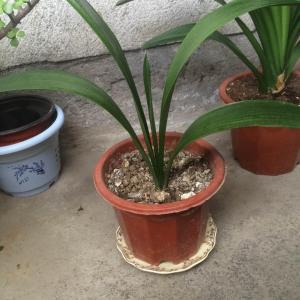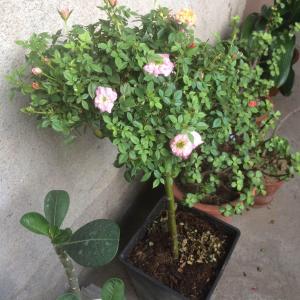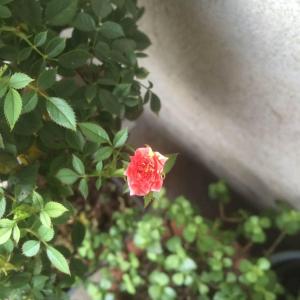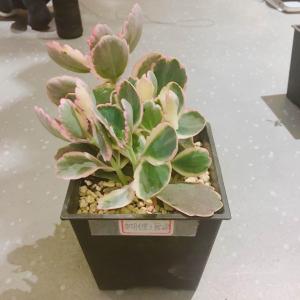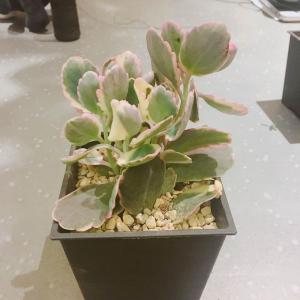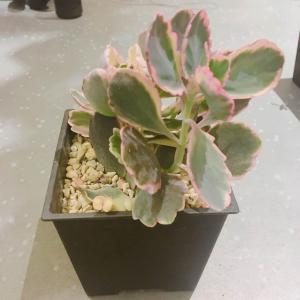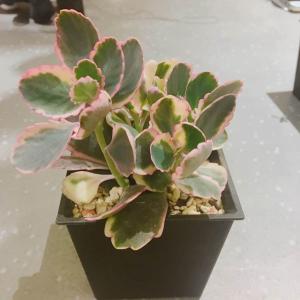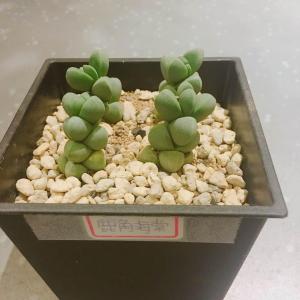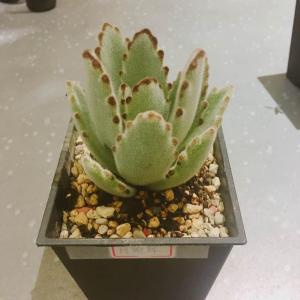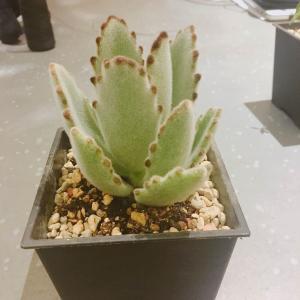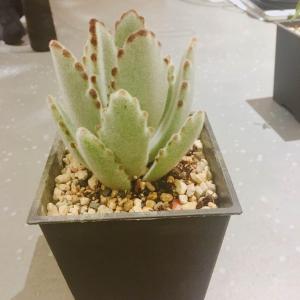文章
Miss Chen
2017年08月06日


Description: This perennial wildflower consists of a low rosette of basal leaves up to 1½' across and a flowering stalk about 1½–2' tall. The floppy basal leaves are 6-12" long and 1/3" (8 mm.) across; they are medium to dark green, linear in shape, parallel-veined, glabrous, and smooth along their margins. Along the underside of each basal leaf, there is a prominent mid-rib. The erect central stalk is slender, light to medium green, and glabrous; it terminates in a spike-like raceme of flowers that is several inches in length. Underneath the floral spike, there are usually 1-3 bracts along the stalk. These bracts are green, linear to linear-lanceolate in shape, and up to ¾" long. Each flower is ¾–1" across, consisting of 6 tepals, 6 stamens with bright yellow anthers, and a green central ovary with a slender style. The tepals are light blue-violet to nearly white; they are oblong in shape and spread widely from the center of the flower. Each tepal (petal or petal-like sepal) has 1-3 poorly defined veins along its length.
At the base of each flower, there is a single linear bract up to ¾" long that is early-deciduous. The slender pedicel of each flower is about the same length as the bract. The flowers begin to bloom from the bottom of the raceme and continue to bloom upward toward the apex; each flower lasts only 2-3 days. The blooming period occurs from mid- to late spring and lasts about 2-3 weeks. Each fertilized flower is replaced by a 3-celled seed capsule that is about 1/3" in length and nearly as much across. Each seed capsule contains many small seeds that are black and shiny. The basal leaves turn yellow and wither away by mid-summer. The root system consists of a bulb with fibrous roots. This wildflower reproduces by reseeding itself.
Cultivation: The preference is full sun to light shade, moist conditions, and rich loamy soil. Wild Hyacinth is slow to develop, but fairly long-lived. Vegetative growth and development occurs during the cool weather of spring, when adequate moisture is essential.
Range & Habitat: Wild Hyacinth is found occasionally throughout Illinois (see Distribution Map), where it is native. Habitats include moist black soil prairies, moist savannas, moist open woodlands (particularly along the banks of streams), rocky wooded slopes, and limestone glades. This species is typically found in high quality habitats, whether prairies or woodlands.
Faunal Associations: The flowers attract their fair share of insects, including many bees and flies, and occasional butterflies and wasps. Most of these insects seek nectar from the flowers, although some short-tongued bees also collect pollen. Bee visitors include honeybees, bumblebees, Cuckoo bees (Nomada spp.), and Halictid bees (Halictus spp., Lasioglossum spp., etc.). Other floral-faunal relationships are poorly understood. White-Tailed Deer occasionally chomp off the tops of the basal leaves. Both the foliage and bulbs are not known to be toxic to mammalian herbivores.
Photographic Location: Along a woodland stream in Douglas or Coles County in east-central Illinois.
Comments: Wild Hyacinth has attractive flowers that are conspicuous during the spring. It is usually found in woodland habitats, but also occurs in prairies. Wild Hyacinth differs from the less common Camassia angusta (Prairie Hyacinth) in several ways, among them: 1) It has slightly larger flowers than the latter, 2) its flowers are usually a slightly lighter shade of blue-violet, 3) its seed capsules are about as broad as long, while Prairie Hyacinth has seed capsules that are slightly longer than broad, 4) the bracts of its flowering stalk are less persistent than those of Prairie Hyacinth, and 5) it blooms earlier in the spring.

0
0
文章
Miss Chen
2017年08月06日


Description: This perennial plant is 1½–3½' tall, branching occasionally. The ridged stems are pubescent. The alternate compound leaves are odd pinnate, and 5-9" long, with about 21-31 leaflets. The oblong leaflets are about 1½" long and 3/8" across, with smooth edges. From the upper axils of the compound leaves there occasionally develops a whorled raceme of flowers from a stout stalk. A raceme (including the stalk) is usually about 1-2" longer than the compound leaves subtending it, or about 7-11" long. A typical raceme is crowded with about 75 creamy flowers, which may have yellow or green tints. Each flower is about ¾" long and tubular-shaped, although jutting slightly upward toward the outer tip. It consists of five petals, including a curved upper hood, a lower keel, and close-fitting side petals. The blooming period occurs during the summer and lasts about 2-3 months. There is no noticeable floral scent. The flowers are replaced by stout oval pods with long pointed tips, which are held nearly erect on the stalk. The root system consists of a taproot.
Cultivation: The preference is full or partial sun and mesic conditions. Canada Milkvetch grows well on most kinds of soil, and probably fixes some nitrogen. It's a robust plant, although the foliage sometimes turns prematurely yellow. This plant has a tendency to sprawl, unless it receives support from adjacent vegetation.
Range & Habitat: The native Canada Milkvetch occurs occasionally in the northern half of Illinois, but it is rather uncommon in most areas of southern Illinois (see Distribution Map). Habitats include moist to slightly dry black soil prairies, sand prairies, typical and sandy savannas, thickets and woodland borders, moist meadows near rivers, and abandoned fields.
Faunal Associations: Primarily bumblebees visit the flowers for nectar. Other long-tongued bee visitors include honeybees and Megachile spp. (Large Leaf-Cutting Bees). Insects with shorter mouthparts have trouble reaching the nectar, nor is the pollen easy to access. Unlike many milkvetches of the Western states, the foliage of Canada Milkvetch is non-toxic and palatable to mammalian herbivores, including deer, groundhogs, rabbits, and livestock. This plant may be difficult to establish where these animals occur in abundance. The seeds may be eaten occasionally by the Wild Turkey and other upland gamebirds, as well as small rodents, such as the Thirteen-Lined Ground Squirrel; however, such observations are confined largely to the Western states, where Astragalus spp. are more abundant.
Photographic Location: The wildflower garden of the webmaster in Urbana, Illinois.
Comments: There are very few Astragalus spp. that occur in Illinois. Canada Milkvetch has a distinctive appearance on account of its size (up to 3½' tall) and abundant creamy flowers (about 75 per raceme). Some pale-flowered vetches are superficially similar in appearance, such as Vicia carolina (Carolina Vetch). However, vetches are vine-like plants with tendrils, while Canada Milkvetch is a semi-erect plant without tendrils (although it may clamber over adjacent vegetation, nonetheless). Another difference is the inflorescence: the raceme of Canada Milkvetch is whorled with about 75 flowers, while Vicia spp. have one- or two-sided racemes with fewer flowers.

0
0
文章
Dummer. ゛☀
2017年08月06日

BOTANICAL NAME: Citrus spp
PLANT TYPE: Fruit
SUN EXPOSURE: Full Sun
SOIL TYPE: Loamy
SOIL PH: Slightly Acidic to Neutral
Standard-size grapefruit and orange trees can grow 18 to 22 feet tall, whereas dwarf varieties only grow 8 to 12 feet tall.
Most citrus varieties are self-fertile, so only one tree is needed for fruit production. On average, fruit bearing begins when the trees are between 3 and 6 years old; however, exact timing will depend on the type of citrus (lemons, oranges, grapefruit, etc.), the cultivar, your climate, the health of the plant and its care, and other factors. Flowering is not seasonal, but occurs during warm weather and regular rainfall. Flowers and fruits may coincide.
PLANTING
Citrus trees should be planted in a sunny and wind-protected area.
In the citrus belt (a loosely defined area stretching from southern California to Florida), trees can be planted at any time, however, spring is the best time for container-grown plants.
Standard-size citrus trees should be spaced 12 to 25 feet apart and dwarf citrus trees should be set 6 to 10 feet apart. The exact distance depends on the variety. The bigger the fruit, the farther the distance.
If the soil is not well-drained, plant the trees on a slight mound to prevent waterlogging.
To plant citrus trees inside from seeds, remove the seeds from the desired fruit. Soak the seeds overnight in water and plant them ½ inch deep in moist potting soil. Cover the pot with a plastic bag or wrap and let it sit in a warm and sunny spot for a few weeks until the seeds start to grow. Then, remove the plastic but keep the pot near a warm and sunny window.
CARE
A few weeks after planting, and for the first few years (before bearing age), feed the tree a balanced (such as 6-6-6) fertilizer. Learn more about soil amendments and preparing soil for planting.
For newly bearing trees, provide nutrients to continue branch and leaf growth, but also to replace nutrients lost by fruit forming. A citrus blend is ideal.
Check manufacturer’s directions, ask a garden nursery, or consult your local cooperative extension as to how often and how much fertilizer to apply during each year of a tree’s growth.
Mulches are not recommended for citrus trees, but if trees are located in a cultivated plant bed where mulch is used, keep at least 12 inches of bare ground between the tree trunk and the mulch. Pre-emergent herbicides may be used to prevent weed seeds from germinating.
Fruit thinning is unnecessary for citrus trees, as they typically experience something called the “June drop.” In late spring or early summer (May or June for most of the country), citrus trees naturally drop a number of their immature fruit.
PESTS/DISEASES
Aphids
Spider Mites
Root and Crown Rots
Fungal Leaf Spots
Fruit Flies
Tristeza Virus spread by Aphids
PLANT TYPE: Fruit
SUN EXPOSURE: Full Sun
SOIL TYPE: Loamy
SOIL PH: Slightly Acidic to Neutral
Standard-size grapefruit and orange trees can grow 18 to 22 feet tall, whereas dwarf varieties only grow 8 to 12 feet tall.
Most citrus varieties are self-fertile, so only one tree is needed for fruit production. On average, fruit bearing begins when the trees are between 3 and 6 years old; however, exact timing will depend on the type of citrus (lemons, oranges, grapefruit, etc.), the cultivar, your climate, the health of the plant and its care, and other factors. Flowering is not seasonal, but occurs during warm weather and regular rainfall. Flowers and fruits may coincide.

PLANTING
Citrus trees should be planted in a sunny and wind-protected area.
In the citrus belt (a loosely defined area stretching from southern California to Florida), trees can be planted at any time, however, spring is the best time for container-grown plants.
Standard-size citrus trees should be spaced 12 to 25 feet apart and dwarf citrus trees should be set 6 to 10 feet apart. The exact distance depends on the variety. The bigger the fruit, the farther the distance.
If the soil is not well-drained, plant the trees on a slight mound to prevent waterlogging.
To plant citrus trees inside from seeds, remove the seeds from the desired fruit. Soak the seeds overnight in water and plant them ½ inch deep in moist potting soil. Cover the pot with a plastic bag or wrap and let it sit in a warm and sunny spot for a few weeks until the seeds start to grow. Then, remove the plastic but keep the pot near a warm and sunny window.

CARE
A few weeks after planting, and for the first few years (before bearing age), feed the tree a balanced (such as 6-6-6) fertilizer. Learn more about soil amendments and preparing soil for planting.
For newly bearing trees, provide nutrients to continue branch and leaf growth, but also to replace nutrients lost by fruit forming. A citrus blend is ideal.
Check manufacturer’s directions, ask a garden nursery, or consult your local cooperative extension as to how often and how much fertilizer to apply during each year of a tree’s growth.
Mulches are not recommended for citrus trees, but if trees are located in a cultivated plant bed where mulch is used, keep at least 12 inches of bare ground between the tree trunk and the mulch. Pre-emergent herbicides may be used to prevent weed seeds from germinating.
Fruit thinning is unnecessary for citrus trees, as they typically experience something called the “June drop.” In late spring or early summer (May or June for most of the country), citrus trees naturally drop a number of their immature fruit.

PESTS/DISEASES
Aphids
Spider Mites
Root and Crown Rots
Fungal Leaf Spots
Fruit Flies
Tristeza Virus spread by Aphids
2
1
文章
Miss Chen
2017年08月05日


Description: This perennial wildflower is 8-20" tall, erect, and unbranched. The central stem is light green to brown, terete, and canescent to short-pubescent. Pairs of opposite leaves occur at intervals along the central stem. The leaf blades are 2-3" long and ¾–1½" across; they are lanceolate, ovate, or oval in shape and their margins are smooth. The upper surfaces of the blades are green and hairless, while their lower surfaces are pale green and canescent to short-pubescent. On each blade, the lateral veins extend outward from the central vein toward the outer margins. The petioles are about ¼" in length. The central stem terminates in a a dome-shaped umbel of flowers about 1½–2" across; there are usually 1-3 additional umbels of flowers that develop from the axils of the upper leaves. Each umbel has 8-24 flowers that are more or less white. Individual flowers are about ¼" across, consisting of a short reproductive column in the center, 5 surrounding hoods with inwardly curving horns, and 5 drooping corolla lobes. The hoods are white or cream-colored, while the corolla lobes are white, greenish white, or pale purplish white. The slender pedicels of the flowers are about ¾–1" long and short-pubescent.
The blooming period occurs from late spring to mid-summer and lasts about 3 weeks. Fertilized flowers are replaced by spindle-shaped seedpods (follicles) about 2-3" long that have smooth and canescent outer surfaces. These seedpods are held erect. At maturity, each seedpod splits open along one side, releasing seeds with tufts of light brown hair. The seeds are distributed by the wind. The root system is rhizomatous.
Cultivation: The preference is full or partial sun, dry conditions, and sandy soil; other kinds of soil are tolerated, if water drainage is good. This small milkweed could be cultivated in rock gardens.
Range & Habitat: The native Oval-Leaved Milkweed is rare in Illinois and state-listed as endangered; it is found in only a few northeastern counties. This milkweed is more typical of prairies in the northern plains; Illinois lies at the southeastern limit of its range. Habitats include hill prairies and dry sand prairies, typical savannas and sandy savannas, and openings in upland oakDistribution Map woodlands. Occasional wildfires are probably beneficial as this reduces the encroachment of woody vegetation. Oval-Leaved Milkweed is found in high quality natural areas.
Faunal Associations: The nectar of the flowers attracts many kinds of insects, including long-tongued bees, wasps, ants, butterflies and skippers, and probably some moths. Ants are nectar robbers, but they may provide the flowering plant with some protection from aphids and other small insects. Little information about floral-faunal relationships is available for this milkweed specifically, but in general milkweed species (Asclepias spp.) attract a distinctive group of insects that feed on the leaves and other parts of these plants. These insect feeders include the weevil Rhyssomatus lineaticollis, Lygaeus kalmii (Small Milkweed Bug), Oncopeltus fasciatus (Large Milkweed Bug), Tetraopes basalis (Milkweed Longhorn), Tetraopes femoratus (Large Red Milkweed Beetle), Tetraopes tetrophthalmus (Red Milkweed Beetle), Aphis nerii (Introduced Milkweed Aphid), the aphids Myzocallis asclepiadis and Myzocallis punctatus, the moths Cycnia inopinatus (Unexpected Cycnia) and Cycnia tenera (Delicate Cycnia), and the butterfly Danaus plexippus (Monarch). Because the foliage is toxic and bitter as a result of its milky latex, mammalian herbivores usually avoid milkweeds. Sometimes, the Eastern Goldfinch uses the tufted hairs of the seeds in the construction of its nests.
Photographic Location: A nature preserve in Cook County, Illinois. The photograph of the flowering plant was taken by Lisa Culp (Copyright © 2009).
Comments: This little-known milkweed has reasonably attractive flowers and foliage. It is one of several milkweeds (Asclepias spp.) in Illinois with flowers that are more or less white. To identify Oval-Leaved Milkweed correctly, the following two characteristics should be considered: 1) its stems and leaf undersides are canescent or short-pubescent, rather than hairless or long-haired, and 2) its larger leaves are usually ovate to oval, rather than linear or lanceolate. For example, the white-flowered Asclepias lanuginosa (Woolly Milkweed) has more slender leaves and its stems are covered with spreading hairs. This latter milkweed produces only a single terminal umbel of flowers per plant, while Oval-Leaved Milkweed often produces 1-3 axillary umbels of flowers. Other common names of Asclepias ovalifolia are Dwarf Milkweed and Oval Milkweed.

0
0



